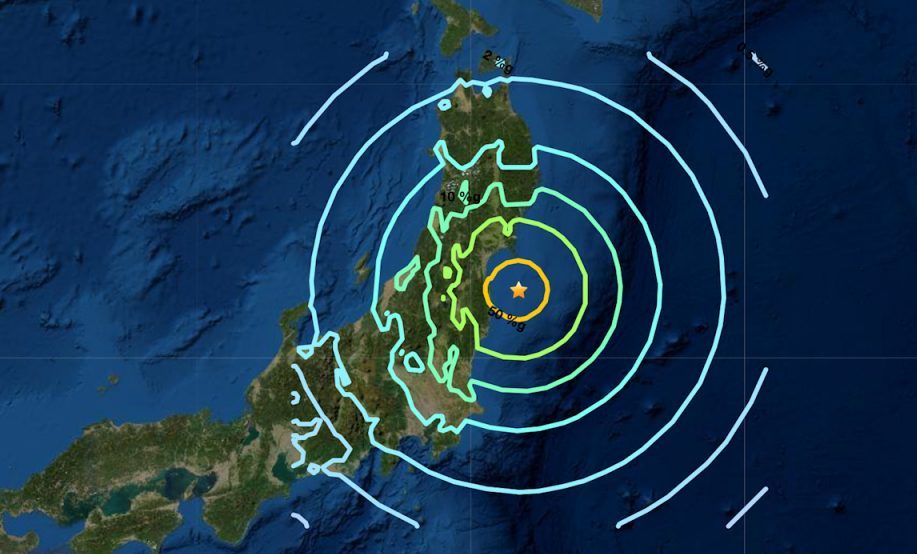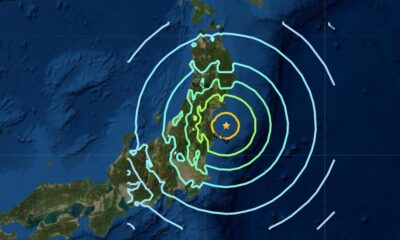Weather
Germany and Italy Brace for Intense Heatwaves Amid Widespread Health Alerts

Germany and Italy are grappling with extreme heatwaves this week, prompting widespread health alerts across both countries. The heat, driven by high humidity and unrelenting temperatures, poses significant health risks, particularly to vulnerable populations.
In Germany, the country is bracing for its hottest day of the year on Tuesday, with temperatures expected to soar close to 40°C (104°F). The German Weather Service (DWD) recorded a high of 35.7°C (96.3°F) on Monday in Bad Neuenahr-Ahrweiler, Rhineland-Palatinate, marking the highest temperature of the year so far. However, as the heatwave spreads northeastward, temperatures are anticipated to reach 37°C (98.6°F) in some regions, potentially setting a new record for 2024.
Adding to the discomfort, high humidity levels are expected to make it feel even hotter, complicating efforts to stay cool. The situation is exacerbated by “tropical nights,” where temperatures remain above 20°C (68°F) even after sunset, offering little respite from the heat.
In response, authorities have issued heat alerts across most of Germany, with only parts of the North and Baltic Sea coastlines spared. Level 2 and Level 3 heat warnings are in effect for areas in Baden-Württemberg, particularly around Schweighausen and Oberprechtal, northeast of Freiburg. The public is urged to take precautions, especially those most vulnerable to heat-related illnesses.
Meanwhile, Italy is also facing record-high temperatures as the country prepares for the Ferragosto holiday on August 15. After enduring an extreme heatwave last weekend, with temperatures exceeding 40°C (104°F) in some areas, the heat is expected to peak again this week, particularly in Sardinia and Sicily.
Although the current temperatures have not yet surpassed last year’s records, the heatwave’s impact is unusually widespread. On Monday, 17 cities, including Rome, Palermo, and Florence, were placed under the Ministry of Health’s red alert—the highest level of heat warning. By Tuesday, that number had risen to 19, and it is expected to reach a record 22 cities by Wednesday.
The red alert signifies a serious health risk to the general population, especially for the elderly, children, and individuals with pre-existing health conditions. Just five of Italy’s 27 major cities—Catania, Civitavecchia, Messina, Pescara, and Reggio Calabria—are under a lower yellow level of alert. Authorities have advised residents to stay indoors during the afternoon, avoid strenuous activity, and stay hydrated.
The current heatwave in Italy is expected to begin easing as the Ferragosto holiday approaches, with most of the country cooling down significantly by the weekend. Thursday and Friday may also bring relief in the form of cloudy skies and potential thunderstorms.
Europe, the fastest-warming continent on Earth, continues to experience increasingly severe heatwaves, a stark reminder of the accelerating impacts of human-caused climate change. As temperatures rise, so too does the urgency for adaptive measures to protect public health and mitigate future risks.
Weather
Tsunami Advisory Issued Following Powerful 6.9 Magnitude Earthquake Off Southern Japan

A powerful earthquake measuring 6.9 in magnitude struck off the coast of southern Japan on Thursday, prompting the Japan Meteorological Agency to issue a tsunami advisory. The quake, which registered a preliminary magnitude of 6.9, was centered off the eastern coast of Kyushu, Japan’s southern main island, at a depth of approximately 30 kilometers.
The advisory predicted waves up to 1 meter high along the southern coast of Kyushu and the nearby island of Shikoku. As of now, no additional details have been reported.
Japan, situated within the Pacific “Ring of Fire,” is one of the most earthquake-prone regions in the world. The country’s history with seismic activity is marked by significant events, most notably the catastrophic magnitude 9.0 earthquake in March 2011. This disaster was followed by a devastating tsunami, which caused widespread destruction along the northeastern coast, resulting in nearly 20,000 fatalities and triggering the Fukushima Daiichi nuclear meltdowns.
In a more recent event, a magnitude 7.6 earthquake struck the north-central region of Noto on January 1, leading to the deaths of at least 241 people.
As Japan faces this latest seismic event, the nation remains on high alert, mindful of its vulnerable position within the Pacific “Ring of Fire.” The memory of past disasters serves as a somber reminder of the potential dangers posed by earthquakes and tsunamis in this geologically active region.
-

 Business1 year ago
Business1 year agoSaudi Arabia’s Model for Sustainable Aviation Practices
-

 Business1 year ago
Business1 year agoRecent Developments in Small Business Taxes
-

 Politics1 year ago
Politics1 year agoWho was Ebrahim Raisi and his status in Iranian Politics?
-

 Business11 months ago
Business11 months agoCarrectly: Revolutionizing Car Care in Chicago
-

 Business11 months ago
Business11 months agoSaudi Arabia: Foreign Direct Investment Rises by 5.6% in Q1
-

 Technology1 year ago
Technology1 year agoComparing Apple Vision Pro and Meta Quest 3
-

 Politics1 year ago
Politics1 year agoIndonesia and Malaysia Call for Israel’s Compliance with ICJ Ruling on Gaza Offensive
-

 Sports10 months ago
Sports10 months agoKeely Hodgkinson Wins Britain’s First Athletics Gold at Paris Olympics in 800m
























